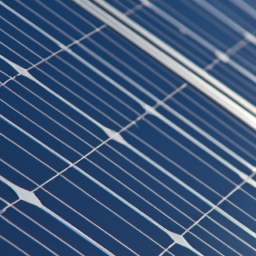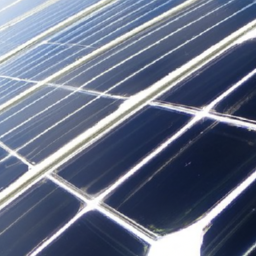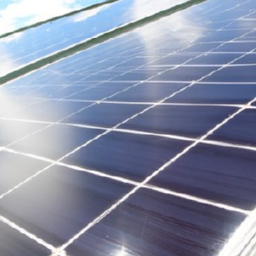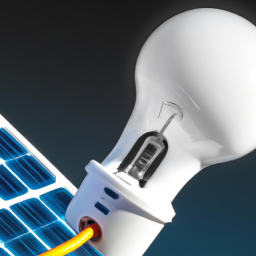Imagine you’re on an outdoor adventure, relying on your trusty solar generator to power your devices, when suddenly, rain starts pouring down unexpectedly. Panic sets in as you wonder what will happen if your solar generator gets wet. Will it survive? Will it still function? In this article, we will explore the potential consequences and precautions to take when faced with this situation.
Understanding the Basics of Solar Generators
Definition of a solar generator
A solar generator, also known as a solar power generator, is a device that converts sunlight into electricity. It consists of solar panels, a battery pack, an inverter, and other components that work together to harness solar energy and provide a source of power. Unlike traditional generators that rely on fuel or gas, solar generators utilize clean and renewable energy from the sun to generate electricity, making them environmentally friendly and cost-effective.
How a solar generator works
Solar generators work by harnessing the energy from the sun through solar panels, which are made up of photovoltaic cells. These cells, when exposed to sunlight, produce a direct current (DC). The DC is then converted into alternating current (AC) through an inverter, making it suitable for powering electronic devices and appliances. The excess energy produced by the solar panels is stored in a battery pack for later use, ensuring a continuous power supply even when the sun is not shining.
Components of a solar generator
Solar generators are made up of several key components, each playing a crucial role in the generation and storage of solar power. The main components include:
- Solar Panels: These are made up of photovoltaic cells that convert sunlight into electrical energy.
- Battery Pack: The battery pack stores the excess energy produced by the solar panels and provides power when the sun is not available.
- Inverter: The inverter converts the direct current (DC) generated by the solar panels into alternating current (AC) used by most electronic devices and appliances.
- Charge Controller: The charge controller regulates the flow of electricity between the solar panels and the battery pack, preventing overcharging or damage to the batteries.
- Power Outlets: These outlets allow you to connect and power various devices and appliances.
The Impact of Water on Electrical Equipment
Water as a conductor of electricity
Water is an excellent conductor of electricity. It contains ions that allow the flow of electrical current, making it essential for most electrical systems. However, water can also be a significant risk factor when it comes into contact with electrical equipment that is not designed to be submerged or exposed to moisture.
Safety risks associated with wet electrical equipment
When electrical equipment gets wet, it poses various safety risks. Water can cause short circuits, leading to electrical fires or damage to the equipment. Additionally, touching wet electrical equipment can result in electric shock hazards, potentially causing serious injuries or even fatalities. It is crucial to understand the dangers associated with wet electrical equipment to prevent accidents and ensure personal safety.
Short-circuiting and other electrical hazards due to water
When water enters electrical equipment, it can create a direct path for electrical current, known as a short circuit. Short circuits occur when the normal flow of electricity is disrupted, causing excessive heat buildup and potentially damaging the equipment. Water can also corrode electrical connections, leading to increased resistance and further compromising the safety and performance of the equipment.
Water Resistance and Solar Generators
What is water resistance in electronics
Water resistance refers to the ability of electronic devices and equipment to withstand exposure to water without suffering damage. While water resistance is not the same as being fully waterproof, it helps protect against water damage to a certain extent. The level of water resistance in electronic devices is usually indicated by an IP (Ingress Protection) rating, which provides information on the device’s ability to resist the intrusion of water and other foreign objects.
Common levels of water resistance in solar generators
Solar generators often have varying degrees of water resistance, depending on their construction and design. Common IP ratings for water resistance in solar generators include IPX4, IPX5, and IPX6. An IPX4 rating signifies that the generator can withstand water splashes from any direction, while IPX5 indicates protection against water jets from a nozzle. IPX6 means that the generator is resistant to powerful water jets from all directions.
Limitations of water resistance
It is important to note that water resistance does not guarantee complete protection against water damage. While a water-resistant solar generator may withstand light rain or splashes, it may not be able to endure submersion in water or heavy rainfall. Additionally, prolonged exposure to water or moisture can gradually wear down the water resistance capabilities of the generator, making it more susceptible to damage. It is essential to exercise caution and take appropriate measures to protect your solar generator from excessive water exposure.
What Happens If a Solar Generator Gets Wet?
Immediate effects on the generator’s performance
If a solar generator gets wet, several immediate effects on its performance may occur. Water can disrupt the flow of electricity, causing short circuits and potentially damaging the internal components of the generator. The inverter, battery pack, and other electrical connections may be affected, leading to a loss of power output or even rendering the generator non-functional. It is crucial to remove the generator from any wet or waterlogged environment as soon as possible to minimize damage.
Long-term damage and potential repairs needed
If a solar generator remains wet for an extended period, it can lead to long-term damage and potentially require repairs. Components exposed to water may corrode, leading to reduced performance or complete failure. The battery pack’s lifespan may be significantly shortened, impacting its ability to hold a charge. The inverter and other electrical components may also suffer irreversible damage. In such cases, professional repairs or replacement of damaged parts may be necessary to restore the generator to its optimal functionality.
Safety risks involved when a solar generator gets wet
A wet solar generator poses safety risks to both the equipment itself and those in its vicinity. Electric shock hazards are a significant concern, as touching or operating wet electrical equipment can lead to severe injuries. Additionally, the risk of electrical fires or short circuits increases when water comes into contact with internal electrical connections. It is essential to prioritize safety and take immediate action if a solar generator becomes wet to prevent accidents or further damage.
Signs Your Solar Generator May Be Damaged By Water
Physical signs of water damage
When a solar generator has been damaged by water, there are often physical signs that indicate the extent of the damage. These signs may include:
- Discoloration or rusting of external surfaces
- Visible moisture or water droplets inside the generator
- Corroded electrical connections or terminals
- Bulging or damaged battery pack
- Burn marks or signs of overheating
Performance issues indicating water damage
In addition to physical signs, performance issues can also indicate water damage in a solar generator. These performance issues may include:
- Reduced power output
- Inconsistent or intermittent power supply
- Difficulty in charging the battery pack
- Malfunctioning or non-responsive power outlets
- Overheating or abnormal noises during operation
Sudden failure of the solar generator
In some cases, a solar generator may experience a sudden and complete failure when exposed to water. This can occur if the internal electrical connections are severely damaged or short circuits occur, rendering the generator inoperable. Sudden failure may be accompanied by an electrical smell or visible smoke, indicating a serious issue. If your solar generator fails suddenly, it is essential to investigate the cause and seek professional assistance for repairs or replacement.
Assessing the Damage
Initial assessment of the damage
After a solar generator has been exposed to water, assessing the initial damage is crucial to determine the necessary course of action. Begin by safely disconnecting the generator from any power sources and inspecting it for physical signs of water damage. Check for the presence of moisture, corrosion, or any visible abnormalities. Document the extent of the damage, take photographs if possible, and carefully note any performance issues observed.
Professional assessment options
For a more thorough evaluation of the damage, it is advisable to seek professional assessment from a qualified technician or solar generator specialist. Professionals can perform diagnostic tests to determine the specific areas of damage and provide expert recommendations for repairs or replacement. Their expertise and experience can ensure a comprehensive assessment and help you make informed decisions regarding the repairs or replacement options available.
Costs and implications of various forms of damage
The costs and implications of water damage to a solar generator can vary depending on the extent and severity of the damage. Minor damage may only require cleaning, drying, or replacing specific components, resulting in relatively lower costs. However, if significant internal components are affected or require replacement, the costs can significantly increase. Additionally, the time and effort involved in repairs or replacement should also be considered, as prolonged downtime may impact your access to reliable power. Consulting with professionals and obtaining repair cost estimates will provide a clearer understanding of the financial implications and help you weigh the options available.
Repairing a Water-Damaged Solar Generator
DIY repair solutions
For minor water damage to a solar generator, there may be some DIY repair solutions available. These can include:
- Drying: Carefully disassemble the generator, if possible, and allow all components to thoroughly dry in a well-ventilated area. Use absorbent materials, such as towels or silica gel packets, to aid in the drying process.
- Cleaning: Remove any visible moisture or residue from internal components using a soft, lint-free cloth. Use isopropyl alcohol or electronic contact cleaner to clean corroded connections or terminals.
- Component replacement: If specific components are damaged beyond repair, such as the battery pack or inverter, consider sourcing replacement parts from reputable manufacturers or suppliers.
When to seek professional help
While some minor repairs can be done independently, it is advisable to seek professional help for significant water damage or complicated repairs. Professional technicians have the knowledge, skills, and specialized tools to safely diagnose and repair water-damaged solar generators. Attempting complex repairs without adequate expertise may lead to further damage or compromise the safety of the generator. It is always best to prioritize personal safety and consult professionals when in doubt.
Expected costs of repair
The costs of repairing a water-damaged solar generator can vary depending on the scope and complexity of the repairs needed. Minor repairs may be relatively affordable, involving only the replacement of specific components or cleaning and drying of internal parts. However, extensive damage or the need for component replacements can result in higher repair costs. It is essential to obtain detailed cost estimates from repair professionals to make informed decisions regarding the repair or replacement of your solar generator.
Preventing Water Damage to Your Solar Generator
Proper storage and handling of your solar generator
To prevent water damage to your solar generator, proper storage and handling practices are crucial. Follow these guidelines:
- Store the generator in a dry and protected area, away from direct exposure to water or moisture.
- Always handle the generator with clean and dry hands to minimize the risk of introducing moisture or water into internal components.
- Avoid placing the generator near potential sources of water, such as water pipes, faucets, or outdoor sprinklers.
- Use protective covers or cases specifically designed for solar generators to shield them from water or accidental spills.
Protecting your solar generator during bad weather
During bad weather conditions, it is essential to take extra precautions to protect your solar generator from water damage. Follow these steps:
- If possible, relocate the generator to a covered area or indoors during heavy rainfall or stormy conditions.
- Ensure that any cables or connections are properly sealed and protected from exposure to rain or snow.
- Use waterproof covers or enclosures for the generator or consider installing a weatherproof housing for added protection.
Regular maintenance tips to prevent water damage
Regular maintenance is key to preventing water damage and ensuring the longevity of your solar generator. Consider the following tips:
- Inspect the generator regularly for any signs of damage, including wear, corrosion, or loose connections.
- Keep the generator clean and free from debris that may obstruct ventilation or cause issues with connections.
- Regularly check and tighten any loose screws or fasteners to ensure the generator remains securely sealed.
- Consider scheduling professional maintenance and inspections to identify and address any potential water damage risks.
Waterproof Solar Generators – An Overview
What makes a solar generator waterproof
A waterproof solar generator is designed with specific features and materials to provide a higher level of protection against water damage. These features may include:
- Sealed components: Waterproof solar generators have sealed electrical components, preventing water intrusion and safeguarding internal connections.
- Waterproof enclosures: The generator may include a fully sealed or weatherproof housing that protects the internal components from direct exposure to water or moisture.
- Enhanced IP rating: Waterproof generators often have a higher IP rating, indicating superior water resistance capabilities compared to standard models.
- Waterproof connectors: The connectors used in waterproof generators are designed to ensure a secure and watertight connection, minimizing the risk of water damage.
Benefits and limitation of waterproof solar generators
Waterproof solar generators offer several benefits, including:
- Increased durability: Waterproof construction enhances the generator’s resistance to water and moisture, extending its lifespan and preventing premature damage.
- Versatility: Waterproof generators are suitable for outdoor use in various weather conditions, providing reliable power even in wet environments.
- Added safety: With superior water resistance, waterproof generators reduce the risk of short circuits, electrical fires, and electric shock hazards associated with water exposure.
However, it is important to note that even waterproof generators have limitations. While they can withstand rain, splashes, or mild exposure to water, they may not be fully submersible or withstand heavy downpours or flooding. It is crucial to understand the specific IP rating and limitations of a waterproof generator to ensure adequate protection in different scenarios.
Recommendations for waterproof solar generators
When choosing a waterproof solar generator, consider the following recommendations:
- Research reputable manufacturers known for producing high-quality and reliable waterproof generators.
- Check the IP rating of the generator and ensure it aligns with your specific water resistance requirements.
- Read customer reviews and seek recommendations from trusted sources to gauge the performance and durability of the generator.
- Evaluate the generator’s capacity and power output to ensure it meets your energy needs.
Conclusion: Importance of Protecting Your Solar Generator From Water
Reiterating dangers of wet solar generators
It cannot be emphasized enough that wet solar generators pose significant dangers. Exposure to water can lead to electrical short circuits, fires, damage to internal components, and safety hazards. It is crucial to prioritize the protection of your solar generator from water to prevent accidents and ensure the longevity of the equipment.
Summary of damage control and prevention measures
To protect your solar generator from water damage, follow these key measures:
- Understand the risks associated with water and electrical equipment, including short circuits and electrical shock hazards.
- Regularly inspect your solar generator for signs of water damage, such as discoloration, corrosion, or performance issues.
- Take immediate action if your solar generator gets wet, disconnecting it from power sources and seeking professional assistance if necessary.
- Prioritize regular maintenance and proper storage and handling practices to prevent water damage from occurring.
- Consider investing in a waterproof solar generator to enhance its resistance against water and moisture.
Closing comments on the longevity and safety of well-maintained solar generators
A well-maintained solar generator can provide a reliable and sustainable source of power for years to come. By understanding the basics of solar generators, the risks associated with water exposure, and the importance of preventative measures, you can ensure the longevity and safety of your solar generator. Regular inspections, proper storage, and adherence to maintenance guidelines will contribute to a well-functioning, water-resistant solar generator that continues to provide clean and efficient power. Safeguarding your solar generator from water is not only essential for its performance but also crucial for your personal safety and the safety of those around you.




